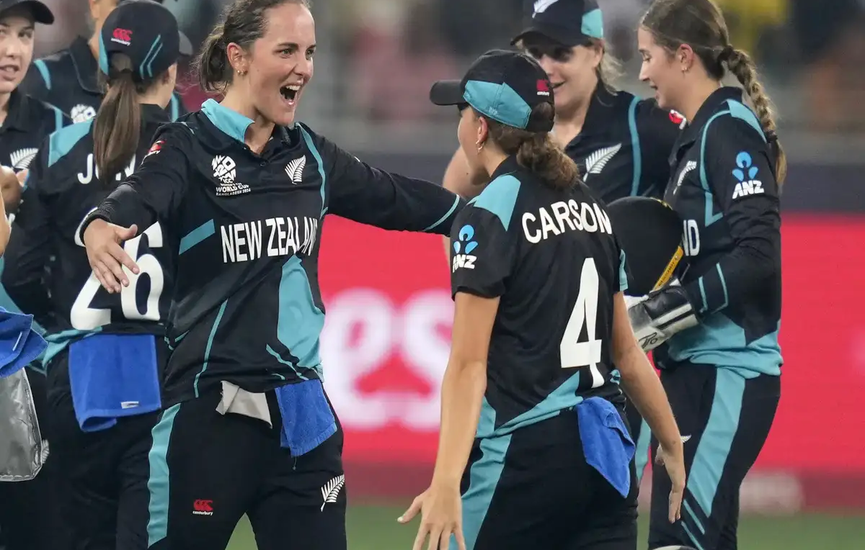New Zealand found themselves under mounting pressure in their Women’s World Cup clash against South Africa, with the scoreboard reading 109 for 3 as the Proteas tightened their grip on the contest. The match, held at Holkar Stadium in Indore, was billed as a high-stakes rematch between last year’s T20 World Cup finalists, and South Africa’s disciplined bowling has so far dictated the narrative. After winning the toss and opting to bat, New Zealand’s innings began in dramatic fashion as veteran Suzie Bates, playing her 350th international match, was dismissed for a golden duck in the very first over. Marizanne Kapp struck immediately, trapping Bates lbw and setting the tone for a relentless bowling display.
Despite the early setback, New Zealand attempted to rebuild through Amelia Kerr and Georgia Plimmer, who showed composure and intent. However, South Africa’s bowling unit, led by Ayabonga Khaka, Nonkululeko Mlaba, and Nadine de Klerk, maintained a tight line and length, effectively stifling the scoring rate and forcing the batters into cautious play. The third wicket fell with the score at 109, marking a pivotal moment in the innings as South Africa began to dominate the middle overs. Their fielding was sharp and energetic, and the bowlers exploited the pitch conditions with precision, making it increasingly difficult for New Zealand to accelerate.
Both teams entered the match desperate for a win after suffering heavy defeats in their opening fixtures. New Zealand had been outplayed by Australia, losing by 89 runs, while South Africa endured a crushing collapse against England, bowled out for just 69. With the pitch in Indore offering good bounce and a lightning-fast outfield, expectations were high for a competitive, high-scoring encounter. However, South Africa’s tactical discipline and early breakthroughs have shifted the momentum, applying a squeeze that could prove decisive if they continue to take wickets at regular intervals.
As the match progresses, New Zealand’s middle order will need to mount a resilient recovery to post a defendable total. The pressure is mounting, and the Proteas appear determined to capitalize on their early success. For South Africa, this contest presents an opportunity to restore confidence and reassert their credentials in the tournament. With both teams fighting to stay alive in the competition, every run and wicket carries weight, and the outcome of this match could significantly shape their paths forward in the Women’s World Cup.
